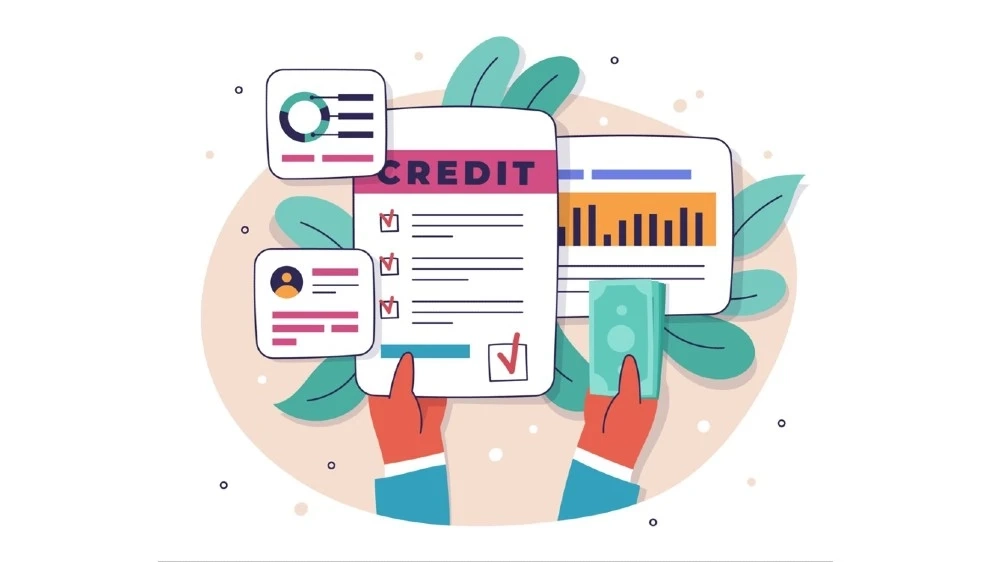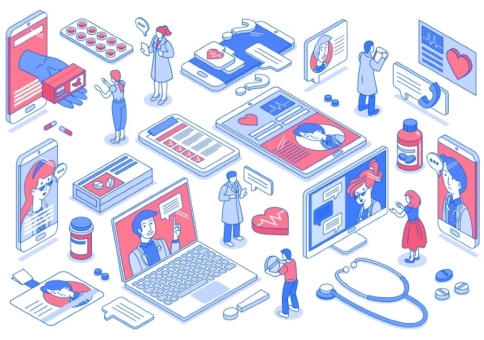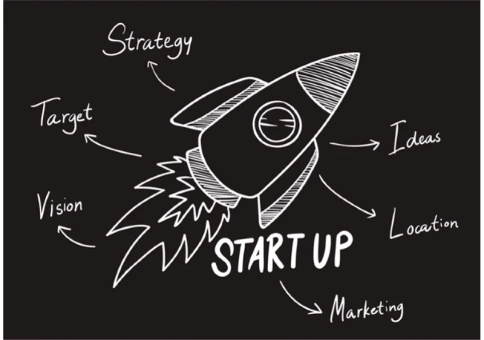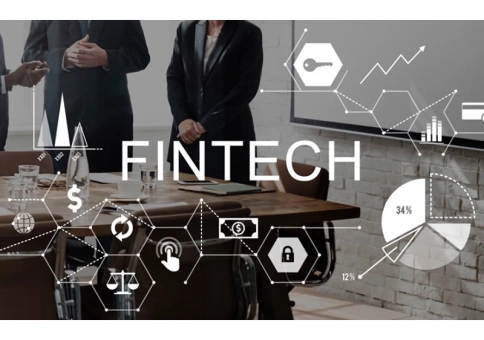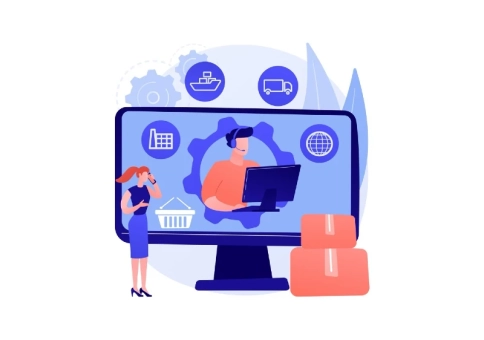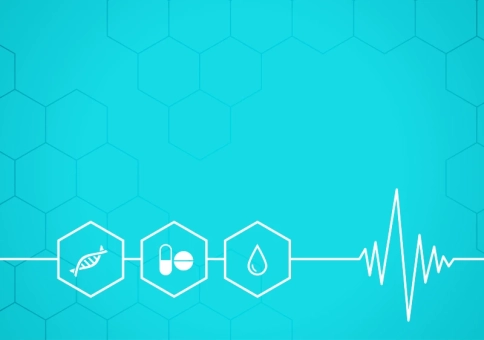How To Develop Credit Scoring Software: Step-by-Step Guide From Fetocan
In today’s complex world, lots of people are in need of a loan. Thus, lots of credit organizations are in need of reliable credit scoring software to properly evaluate the creditworthiness of a potential borrower.
For a borrower, a credit score can significantly change the outcome of the application. And for a lender, the proper (or improper) scoring software can change the outcome of a business — for good or for worse. So what should you be looking for in credit scoring software solutions and how to develop one that fits your needs? This is what we’ll try to understand on this page.
Introduction to Credit Scoring Systems
Let’s start by defining what this software really is and what it does. Credit scoring systems are powerful tools used to evaluate the creditworthiness of individuals and businesses before approving or declining their loan applications. They serve as a standardized method for lenders to assess the likelihood of borrowers to repay their debts. Generally speaking, the software work by analyzing various factors, including:
- Payment history. It examines the borrower's track record of paying out their previous debts.
- Credit utilization. It assesses the amount of available credit the borrower is using in relation to their total credit limit.
- Credit history length. It considers the period of time the borrower has held credit accounts.
- Credit mix. It evaluates the borrower's mix of different types of credit, such as credit cards, loans, or mortgages.
- New credit applications. It considers recent credit inquiries and the borrower's pursuit of new credit.
By analyzing these factors, credit scoring systems generate a number (a score) that lenders use to make decisions about granting loans, determining interest rates, and setting credit limits, i.e. everything a borrower will then see in their loan documents.
Popular Scoring Software
To develop reliable and competitive credit rating software, it’s vital to first take a look at the systems that are already out there, widely used by banks and other lending organizations. And the ones that are always on top of the leadership board are FICO and VantageScore.
Fico Score
The FICO Score is a trusted credit scoring system developed by Fair Isaac Corporation. Many name it the best credit monitoring software, and it is used by all kinds of lenders across the globe. The FICO Score software incorporates complex algorithms and statistical models to analyze an individual's credit history and generate a numerical score that ranges from 300 to 850. Higher scores indicate lower credit risk, while lower scores suggest higher credit risk.
Image by FICO
VantageScore
VantageScore is an alternative credit scoring system developed by the three major credit bureaus: Equifax, Experian, and TransUnion. The VantageScore software uses a sophisticated algorithm that takes into account various factors to generate a credit score ranging from 300 to 850.
Similar to the FICO Score, the VantageScore software evaluates payment history, credit utilization, length of credit history, credit mix, and recent credit inquiries. However, VantageScore also places a particular emphasis on trended credit data. It means that the system considers the borrower's credit behavior over time, providing lenders with a more comprehensive understanding of the borrower's creditworthiness.
Image by NerdWallet
Key Components of Credit Scoring Systems
To build a house, you need to understand which materials you’ll need for the construction. It works like that with the software as well: before you kick off the development process, you need to understand the key components your software will consist of.
Data Collection
Data collection is a fundamental component of credit scoring software — the system needs something to analyze to make the decision. The process involves collecting information about borrowers' credit histories, payment patterns, and other financial data from various sources, such as credit bureaus, financial institutions, collection agencies, and public records. This component should ensure that the system has access to comprehensive and up-to-date information needed for accurate assessments.
Data Processing and Analysis
You collect the data, now you need to process and analyze it. This software component includes organization, cleaning, and transformation of the raw data into a usable format. To ensure the accuracy and consistency of the information, the software should use data processing techniques, such as data validation, data normalization, and data integration. Once processed, the data is analyzed with advanced statistical and machine learning algorithms to identify patterns, correlations, and trends that can contribute to credit risk assessment.
Credit Scoring Models
Continuing with the house-building metaphor, data collection is the foundation, data analysis is the walls, and credit scoring models are the heart, the center of the credit scoring software. These models are developed based on historical credit data and statistical analysis. They assign weights to different variables and generate a credit score that represents the borrower's creditworthiness. Various statistical techniques, such as logistic regression, decision trees, or neural networks are employed to build robust credit scoring models. These models evolve over time as new data becomes available, enabling more accurate predictions of credit risk.
Score Interpretation and Decision Making
The final component involves interpreting the credit score and using it for decision-making. Credit scoring systems provide lenders with a standardized measure of credit risk, enabling them to make decisions on loan approvals, interest rates, credit limits, and other conditions. In most cases, a credit score serves as a key factor in assessing the borrower's creditworthiness and determining the level of risk associated with lending. And while even the best credit report software can give a 100% guarantee that a borrower will repay the loan, it can make rather accurate predictions and seriously help in assessing the risks.
Develop A Credit Rating System in 7 Steps
The house is not built in one night, and the best credit monitoring tools are not created in one step. Here is our step-by-step instruction to build a high-quality credit rating system.
Step 1: Project planning and gathering of the requirements
While this might seem like the most boring part, proper planning is crucial to developing any kind of software, and credit rating systems are not an exception. To kick off the project, you need to define the objectives, understand your business needs, and determine the scope of work. At this point, it is crucial to engage with stakeholders (whether lenders, credit analysts, or any other involved participants) to gather their requirements and expectations. The clearer there are, the fewer unpleasant surprises there will be in the process.
Step 2: Data collection and integration
The next step is to collect and integrate the necessary information for the credit scoring software. Your data set will most likely include credit reports, financial statements, payment histories, and other relevant information from reliable sources such as credit bureaus and financial institutions. The integrity of the credit scoring system is the number 1 factor for its success, so make sure the data is always accurate and complete.
Step 3: Data preprocessing and feature engineering
Once the data is collected, it needs to undergo preprocessing and feature engineering. This step involves cleaning the data, handling missing values, and transforming the variables into a suitable format for analysis. Feature engineering techniques, such as scaling, normalization, and creating new derived features, may also be applied to enhance the predictive power of the data. This process ensures that the data is ready for the next step of the process.
Step 4: Model development and evaluation
Now it’s time to develop and evaluate the credit scoring models. You’ll need to apply various statistical and machine learning algorithms, such as logistic regression, decision trees, or neural networks. Don’t forget to evaluate the models using appropriate performance metrics, such as accuracy, precision, recall, and area under the ROC curve. At this step, you can evaluate whether the model is effective and improve it if necessary.
Step 5: Model integration and deployment
Once you select the best-performing credit scoring model, you need to integrate them into the software system. This step involves incorporating the model into the overall architecture of the credit scoring software and ensuring that it’s seamlessly integrated with other components.
Step 6: Testing and quality assurance
You never release anything until not a single stone is left unturned by the QA team, it’s a law. During this step, you need to conduct rigorous testing to find any potential issues, bugs, or errors. It is crucial to perform both functional and non-functional testing, including unit testing, integration testing, and performance testing. Quality assurance ensures that the software meets all the requirements defined at the first step, operates reliably, and does what it needs to do, i.e. provides accurate credit assessments.
Step 7: Maintenance and monitoring
The job is not done when the software is released (sorry). Regular updates and enhancements are required to adapt to changing industry regulations, data sources, or business requirements. Additionally, you need to always monitor the system's performance and accuracy to ensure that it continues to deliver reliable and consistent results over time.
Potential Challenges and Things to Think About
Forewarned is forearmed, as they say, so making a list of all the challenges and pitfalls that might await you on the way to your credit scoring software is not actually a bad idea. Don’t let it keep you from embarking on this journey, just keep these things in mind during the process.
Data privacy and security
One of the key challenges for credit rating software developers is to ensure data privacy and security. The system will handle sensitive personal and financial information, making it a must to establish robust security measures to keep the users’ data safe. The measures might include encryption protocols, access controls, secure data storage mechanisms, and other tools that can protect against unauthorized access or data breaches. Additionally, complying with data protection regulations and industry best practices, such as General Data Protection Regulation (GDPR), Payment Card Industry Data Security Standard (PCI DSS), or some other one, depending on your location, is paramount to maintaining trust, safeguard customer data, and don’t get fined or banned.
Image by pch.vector on Freepik
Regulatory compliance
Yes, compliance once again. Credit scoring software must adhere to various regulatory requirements and standards. Depending on the region or industry, there may be specific regulations governing the use of credit data, fair lending practices, or anti-discrimination measures. It is crucial to stay updated on these regulations and ensure that the software complies with them. Working closely with legal experts or regulatory consultants can help navigate the complex landscape of compliance and mitigate any potential risks.
Data quality and bias
Another critical consideration in credit scoring software development is maintaining data quality and addressing bias. Data quality issues, such as missing values, inconsistencies, or inaccuracies, can impact the accuracy and reliability of credit assessments. To avoid these challenges, the developers might employ various data validation techniques, data cleansing algorithms, and rigorous quality checks. Additionally, being mindful of potential biases within the data or the scoring models is essential to ensure fairness and avoid discrimination. Regular monitoring and evaluation of the software's performance can help identify and address any bias-related issues.
Scalability and performance
As your credit scoring software gains traction and processes a growing volume of credit applications (and we hope it happens), scalability and performance become important factors. The software should be designed to handle increasing data loads efficiently without sacrificing speed or accuracy. This is where scalable infrastructure, optimized algorithms, and parallel processing techniques can come in handy. Regular performance testing and optimization ensure that the software can handle high demand and deliver timely credit assessments, even during peak periods.
How to Choose the Right IT Company for Credit Scoring Software Development
Now that we’ve covered all the steps, challenges, and recommendations, there is one last but very important question — who will develop that perfectly reliable, scalable, and compliant software? When choosing the software development company for your credit product, make sure to consider the following points.
- Experience. Look for a company with a proven track record in developing credit scoring software or other experience in the financial industry.
- Technical capabilities. Evaluate the technical expertise of the company. Look for proficiency in programming languages, data processing, machine learning algorithms, and cloud technologies.
- Client references. Seek client references and testimonials from previous projects. Feedback from other clients can provide insights into the company's reliability, professionalism, and ability to deliver high-quality software solutions.
All these and many other points are met by the skilled team of Fetocan developers. We are pros in the fintech industry, and will be glad to learn more about your software ideas — just contact us and we’ll see which awesome software we can create for you.
Conclusion
Accurate credit assessments are vital for lenders to make informed decisions, and a well-developed software solution can streamline this process. By following a step-by-step process, addressing potential pitfalls, and choosing the right IT development company, you can create a robust and reliable system. While the process requires thorough planning and technical expertise, building a powerful tool is easy as long as you have the right approach and the right team.
FAQ
- What are the most popular types of credit scoring software?
- The two most popular types of credit scoring software are the FICO Score and VantageScore.
- Are there any alternative credit scoring systems?
- Besides the popular credit scoring systems, there are other software options, such as AI-based GiniMachine, behavior-based MoyoAI, or the Findo credit scoring mobile app.
- What factors should be considered when designing a credit scoring model for accurate risk assessment?
- When developing credit rating software, one should consider data privacy and compliance factors, as well as security, potential data bias, and scalability.

